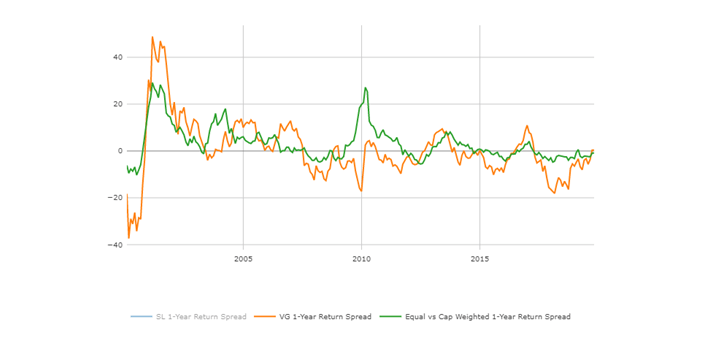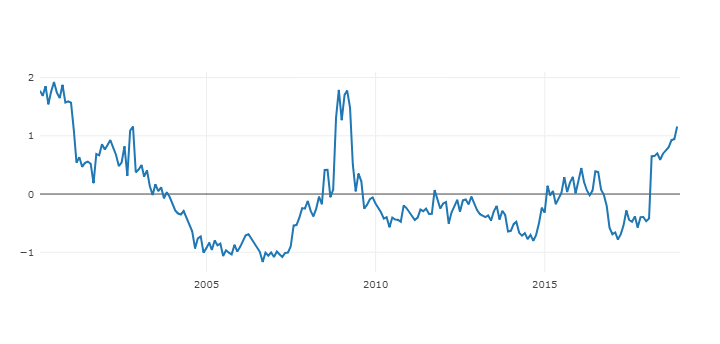US Economics and the Coronavirus
The US economic picture is improving with recent reports showing strength in retail spending, industrial output, and housing starts. However, such surveys covered June and reflected conditions in place before the end of July, or prior to the recent spike in COVID-19 infections. As for unemployment, data on jobless filings remains stubbornly high. On the monetary front, the Federal Reserve announced continued support for the US recovery following its July meeting. While increased debt levels seem worrisome, Professor Siegel of Wharton Business School does not share this concern as much of this debt is locked in at near zero interest rates and higher inflation in the future will help to erode some of those debt balances.
Things are less certain on the fiscal side, though, where Congress and the White House are negotiating to resolve questions on payroll taxes, healthcare, and employment. Overall, the fiscal package taking shape looks likely to be slightly more front-loaded than previously believed. Initially the next round of fiscal support seemed to add $800bn (3.9% of GDP) to the deficit in calendar year 2020, and Congress would add $1.5 trillion in discretionary fiscal support through 2023. The amount of fiscal support in the remainder of 2020 now looks likely to be somewhat larger, probably around $1 trillion (4.9% of GDP). The total cost of the upcoming round of fiscal legislation still looks likely to be around $1.5 trillion, with the remainder spread over 2021 and 2022. Such support should provide additional boost to the US economy.
Global Economics
According to JP Morgan, official releases now allow to accurately assess the impact of the COVID-19 shock in the first half of 2020. The US and Euro area each are poised to record quarterly annualized GDP declines, at -32.5% and -40%, respectively. Data also are trickling in for June and point to a second month of outsized activity gains, setting the stage for an expected 31% annualized surge in global GDP this quarter. The latest news highlights downside risk, but also points to the powerful support in place to bolster the economic growth in the second half of the year. Despite the recent surge in consumer goods spending, the income dividends from fiscal supports are not yet spent. Indeed, JP Morgan forecasts that household saving rates for the US, Euro area, and Japan all stood at elevated levels at midyear.
JP Morgan sees material divergences across countries. China’s and EM Asian tech exporters’ large outperformance during the first half of 2020 is poised to narrow, but this group should sustain strong growth and come closest to a V-shaped recovery in the level of GDP as their industrial sectors benefit from the pickup in goods demand now taking hold. While the Euro area most likely experienced a relatively deep downturn so far this year, Western Europe’s successful re-opening sets the stage for one of the strongest recoveries in the second half of 2020. This is the message from the mobility data, which through July contrast momentum building in the Euro area with the stalling progress in the US.
From Black Rock Investment Symposium
Late July we attended a BlackRock virtual symposium which gathered an impressive group of speakers (CEOs of Microsoft, Airbnb, Black Rock, former governors of Florida and Pennsylvania and influential representatives of academia world). Here are the major topics and highlights, which seemed relevant to us:
- The “stay at home” theme is here to stay and “back to normal” will be evolving with profound changes throughout multiple sectors and industries. For example, traveling might be less, while virtual gatherings will become a new norm. A lot of participants highlighted the success of telemedicine and how this is changing healthcare. Home – related themes will be elevated because people stay at home more and improve things around the house. Working from home becomes more common – commercial real estate and office space may suffer. Business travel is changing with more virtual meetings replacing some travel for short meetings.
- Globalization is changing as well, with multinationals re-routing their supply channels to have adequate production and distribution facilities closer to the end users. Ironically that means that many companies will not leave China, since they are targeting Chinese markets as well. At this juncture, more and more companies are adding additional capacities outside China, while also maintaining China facilities.
- Infrastructure- related projects might be re-emphasized with climate change theme should Democrats sweep all three branches of government. Nevertheless, aging infrastructure needs to be addressed.
- Low interest rates are with us for a very long time. The implication of this: institutional investors are seeking new ways to generate yield– private loans, emphasizing municipals which pay higher interest etc.
- For a traditional 60/40 stock-to-bond allocation, there will need to be a revision of long-term return assumptions especially for bonds due to low interest rates. Our investment team is working on such enhancements to accommodate the traditional 60/40 risk/return profile.
- In a low yield environment, dividend paying stocks with high yields and companies which consistently increase their dividend rates, become much more important for investors seeking income.
- Politics are polarized beyond belief – public officials are paralyzed – there is no room for any error, or you are vilified instantly. If things don’t change, companies are the only institutions to fill the void – emphasizing more equality, ESG approaches and other socially responsible policies.
Stock Market and 2nd Quarter Earnings
While the reporting season for the second calendar quarter is in full swing, we can already see that “stay at home” industries were well positioned for the virus outbreak and quarantine measures. Tech and large pharmaceuticals navigated choppy waters quite well. The solid results by stocks in these sectors reflect generally healthy earnings numbers. “Back to normal” industries will probably experience a divergence in performance going forward. Some structurally impacted areas like energy, airlines, and broader travel and leisure will continue struggling. Others industries should experience the full pain only temporarily and bounce back quickly once there is positive news on treatment or vaccine. For example, larger restaurant chains have already seen pick-up in demand and face less competition from smaller competitors.
We maintain a barbell approach across most of our actively managed strategies. We seek to balance the best of “stay at home” growth stories with “back to normal” plays which we deem effected by the virus only temporarily. All in all, we should remember that with the disbalances currently present (please, see the graphs below) one would expect some mean reversion once the virus news becomes less negative. The first and the second quarter earnings do not define the stock prices as much as future cash flows and profits do.
Valuation Spreads (Source – Signet FM): through June 2020
Equal vs. Market Weighted 1 Yr. Return Spread (Source – Signet FM): through June 2020
Large Growth vs. Small Value 2020 YTD (as of 07/27/2020) (Source – Signet FM):
Factor Performance (Top 2 quintiles of Large Cap Universe vs. SP 500) (Source – Signet FM):
The information and opinions included in this document are for background purposes only, are not intended to be full or complete, and should not be viewed as an indication of future results. The information sources used in this letter are: WSJ.com, Jeremy Siegel, PhD (Jeremysiegel.com), Goldman Sachs, JP Morgan, Empirical Research Partners, Value Line, Ned Davis Research, Citi research and Nuveen.



























































































